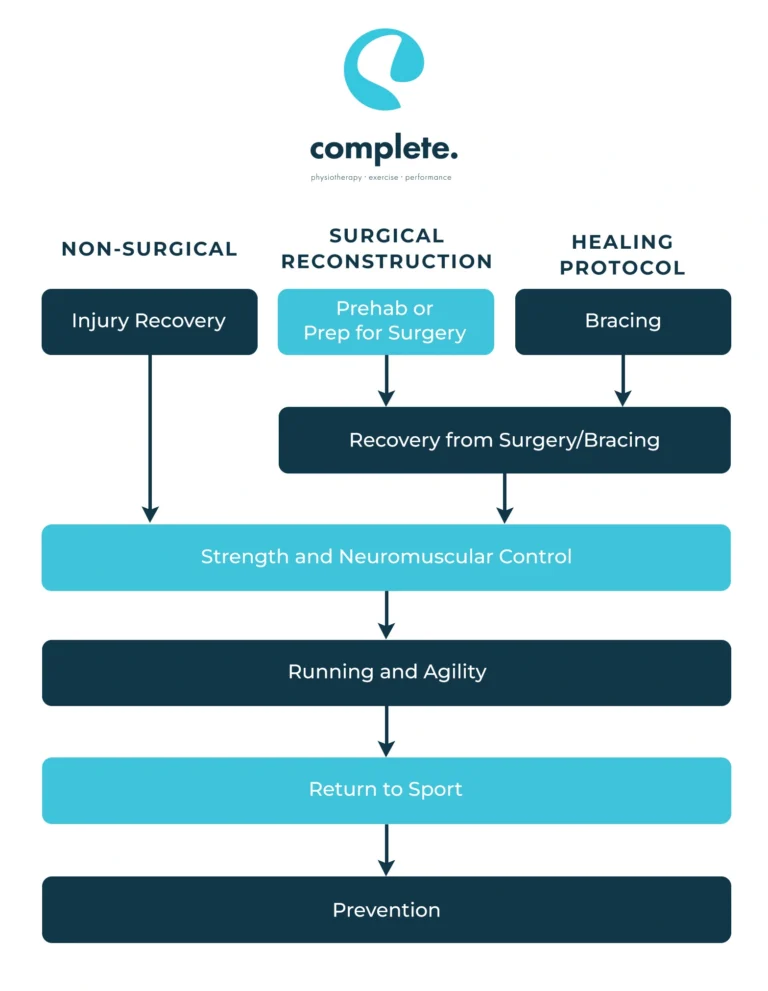

Injury to the ACL occurs most commonly in high intensity change of directions sports like football, netball, soccer or skiing. Most injuries occur as a result of a player’s own movement, like an awkward landing or missed step. But, some injuries may involve contact from an opponent or object. People who have injured an ACL often describe a sensation of a pop, followed by pain and a sensation of instability in the knee or giving way when trying to get up or walk or run after the injury.
The Anterior Cruciate Ligament (ACL) is an internal ligament in the knee that connects the two main bones in the knee (femur and tibia). Although the ACL provides stability to the knee to help us to do many activities, there are many other structures (muscles, other ligaments) which also assist.


